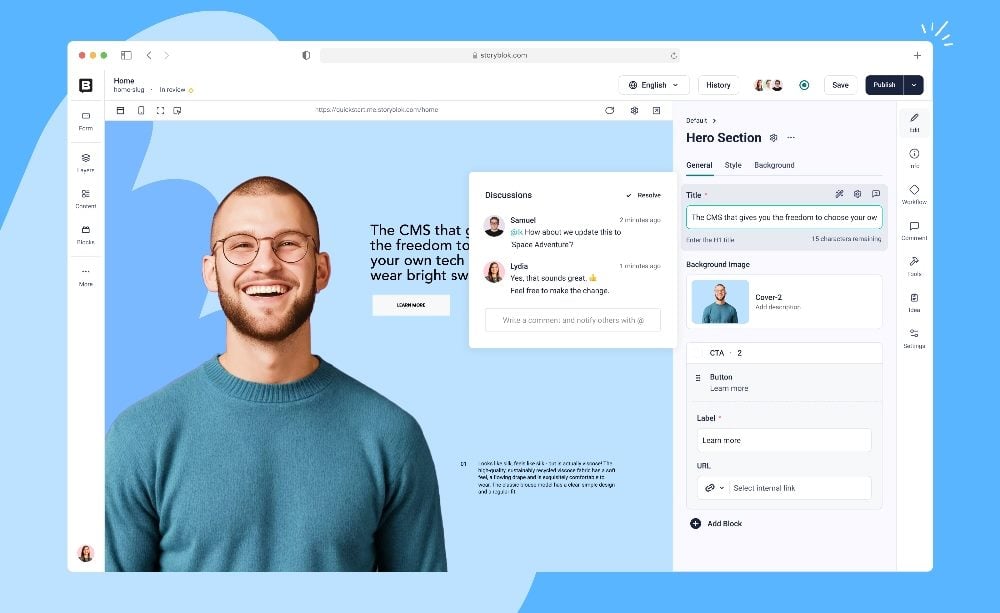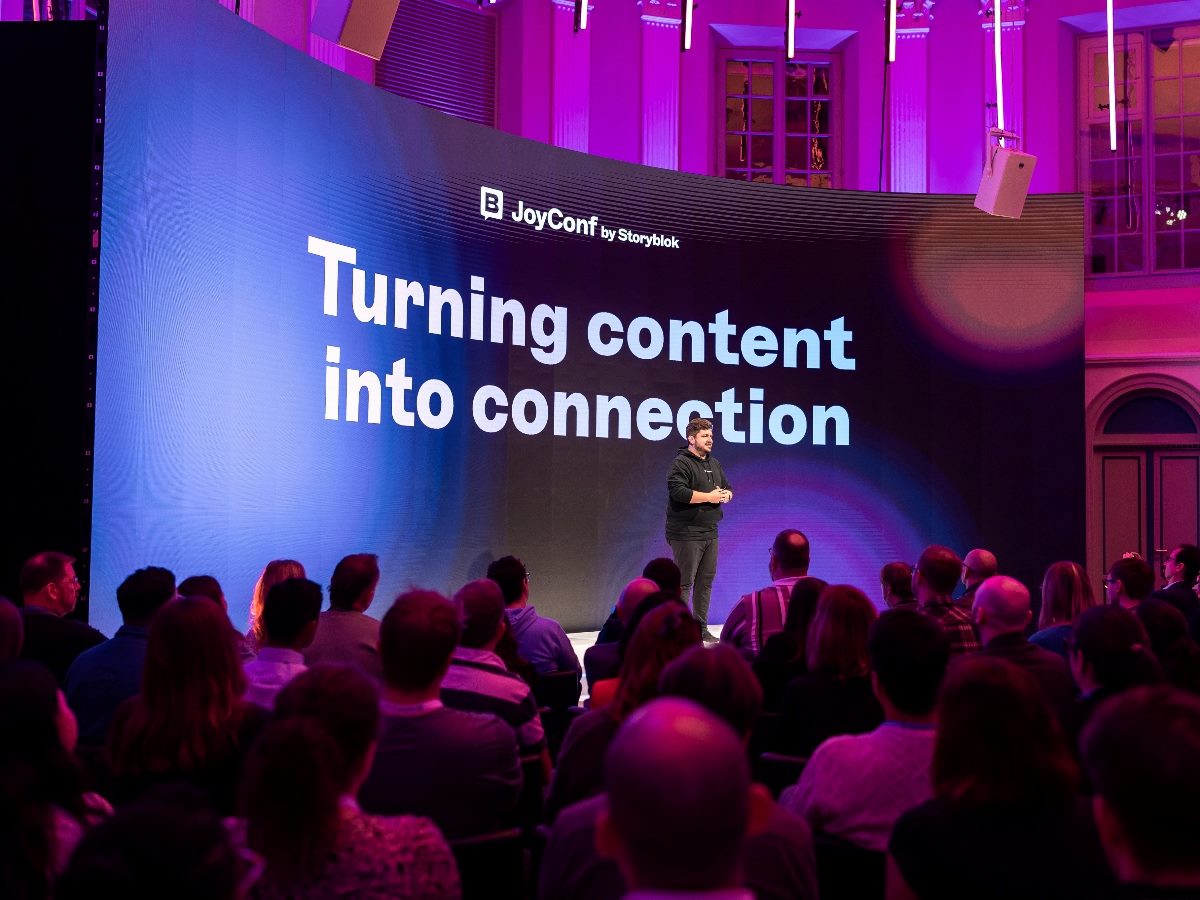The Gist
-
Strategic partnership formed. Storyblok and OtterlyAI integrate CMS and AI search monitoring.
-
AI search adaptation. Brands gain tools to track and optimize AI search visibility.
-
Marketing leaders impacted. Marketing executives must now prioritize AI visibility to remain competitive as search behavior shifts.
Storyblok and OtterlyAI announced a partnership, integrating content management with AI search monitoring capabilities. The collaboration, shared exclusively with CMSWire, aims to help brands track and optimize their visibility across multiple AI search engines including ChatGPT, Google AI Mode, Copilot and Perplexity.
According to company officials, the partnership responds to rapidly changing consumer behavior, with Gartner predicting a 50% decline in organic search traffic by 2028 as users embrace AI search. The integration provides tools for brands to monitor content performance in AI search results and implement optimization strategies.
Table of Contents
- Impacted Audiences for AI Search Optimization Tools
- AI Search Reshaping Digital Strategy
- Why AI Search Is Becoming the New Front Door
- How Brands Should Prepare for AI Search: Clean Content, Structure and Speed
- AI Search 'Upends' Marketing
- Feature Breakdown for Storyblok-OtterlyAI
- Storyblok Background
Impacted Audiences for AI Search Optimization Tools
-
Marketing executives responsible for digital visibility strategies
-
Content managers adapting to AI-driven search environments
-
Digital strategists at mid-sized to large enterprises
AI Search Reshaping Digital Strategy
AI search is fundamentally reshaping how brands approach digital visibility and content strategy.
Storyblok and OtterlyAI's partnership reflects a growing market concern as industry reports suggest AI chatbots are significantly changing how people seek information. With Gartner predicting a 50% decline in organic search traffic by 2028, businesses are racing to adapt their strategies. The shift toward AI search optimization (sometimes called generative engine optimization or LLM optimization) focuses on making brands trusted sources for AI tools through high-quality, structured content.
According to industry experts, businesses increasingly seek ways to "embed human elements into digital interactions" while monitoring their brand visibility across AI platforms. This requires a fundamental rethinking of content strategy, with approximately 90% of marketers now using generative AI tools to support content creation and optimization.
The evolution demands businesses focus on three key areas: customer engagement, predictive capabilities and continuous analysis. While AI tools can help scale content production and keyword research, experts emphasize that human expertise remains essential, particularly as search engines continue to prioritize Experience, Expertise, Authoritativeness and Trustworthiness (E-E-A-T) in their ranking factors.
Why AI Search Is Becoming the New Front Door
Storyblok CEO Dominik Angerer told CMSWire that AI-driven search experiences are transforming how buyers move from question to conversion — skipping many of the traditional discovery steps. He noted that the shift away from multi-click research into direct, conversational answers fundamentally changes how brands must think about visibility and content readiness.
Shift from Multi-Click Journeys to Single-Answer Decisions
Angerer explained that users are increasingly “throwing in the same question they did on Google before” but instead of comparing results across multiple links, they accept the first AI-generated summary as their answer. In his view, this compresses the buyer journey: the research phase effectively collapses into a single interaction, meaning brands that are not represented in AI summaries risk becoming invisible at the moment of decision.
He emphasized that AI summaries “feel natural” and are designed to deliver responses that read as human and authoritative. As a result, users bypass traditional validation steps. Angerer warned that if a brand’s content is inconsistent, outdated or poorly structured, it will fail to surface in AI-generated outputs — a risk that didn’t exist in the same way during the traditional SEO era.
“If you're not part of that in the future, you will not be really relevant,” he said.
Related Article: Why AI-Optimized Websites Win Higher Conversion Rates
How Brands Should Prepare for AI Search: Clean Content, Structure and Speed
Angerer said the companies investing early in AI search readiness all share a common approach: aggressively cleaning up outdated material, improving content structure and ensuring fast delivery performance. He explained that LLMs reward consistency and penalize disorganized content ecosystems because statistical models favor sources with clean semantic patterns.
The Rise of 'Content Observability'
To adapt, Angerer said brands must treat their content repositories like operational systems rather than static libraries. He described a growing need for “content observability,” where organizations continuously monitor accuracy, branding, tone and freshness of every asset — because outdated or duplicative content now actively harms AI visibility.
He explained that legacy search engines used to simply downrank stale pages, limiting the downside. But in AI search, outdated content is not removed — instead it is ingested and reshaped into AI-generated answers, where inaccuracies can propagate widely. As he put it, “the moment you have inconsistent data ... you will actually feed it statistically irrelevant data.
Angerer said this shift makes foundational SEO practices newly important — not for ranking in Google, but for becoming a trustworthy source for LLMs themselves. He reiterated that “speed of delivery” and correct hierarchical structure (H1s, H2s, H3s) remain essential because they help LLMs interpret and categorize content more efficiently.

AI Search 'Upends' Marketing
AI search is a generational transformation in marketing. It upends many of the marketing rules brands have built their strategies on for the past decade or more. Failure to quickly adapt will mean brands will rapidly lose visibility and accurate representation on the internet. This, in turn, will severely undermine their performance to the benefit of their competitors.
- Thomas Peham, CEO and co-founder
OtterlyAI
Feature Breakdown for Storyblok-OtterlyAI
The Storyblok-OtterlyAI partnership offers several capabilities designed to help brands monitor and optimize their AI search presence:
| Capability | Description |
|---|---|
| Competitive Benchmarking | Compare brand visibility in AI responses against competitors |
| Brand Monitoring | Track how AI tools describe company products or services |
| Content Performance | Measure which content is cited in AI answers |
| Localization Insights | Check if localized content appears in regional AI searches |
| Prompt Discovery | Suggests AI search prompts based on keywords or brand name |
Storyblok Background
Storyblok provides a headless content management system (CMS) tailored for digital and marketing teams, with a focus on enterprise and midmarket organizations.
Content Management Platform
The company offers a cloud-based CMS that separates content from presentation, enabling businesses to manage and deliver digital experiences across multiple channels. Its platform includes visual editing tools, collaboration features and support for omnichannel delivery. Storyblok asserts that its API-driven architecture allows for integration with existing technology stacks and front-end frameworks.
Market Focus
The company operates in the enterprise web content management industry, serving organizations seeking flexibility in digital content delivery. Its typical customers include mid-sized to large enterprises in sectors such as retail, finance and technology. Storyblok positions itself as a solution for businesses aiming to streamline content operations and accelerate digital projects.
Have a tip to share with our editorial team? Drop us a line:
